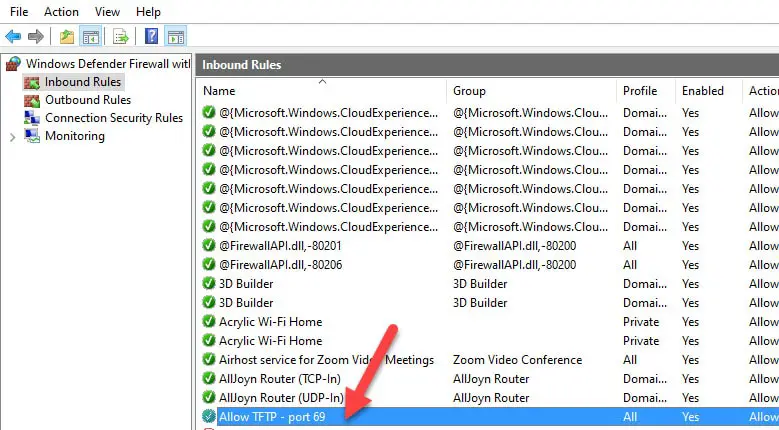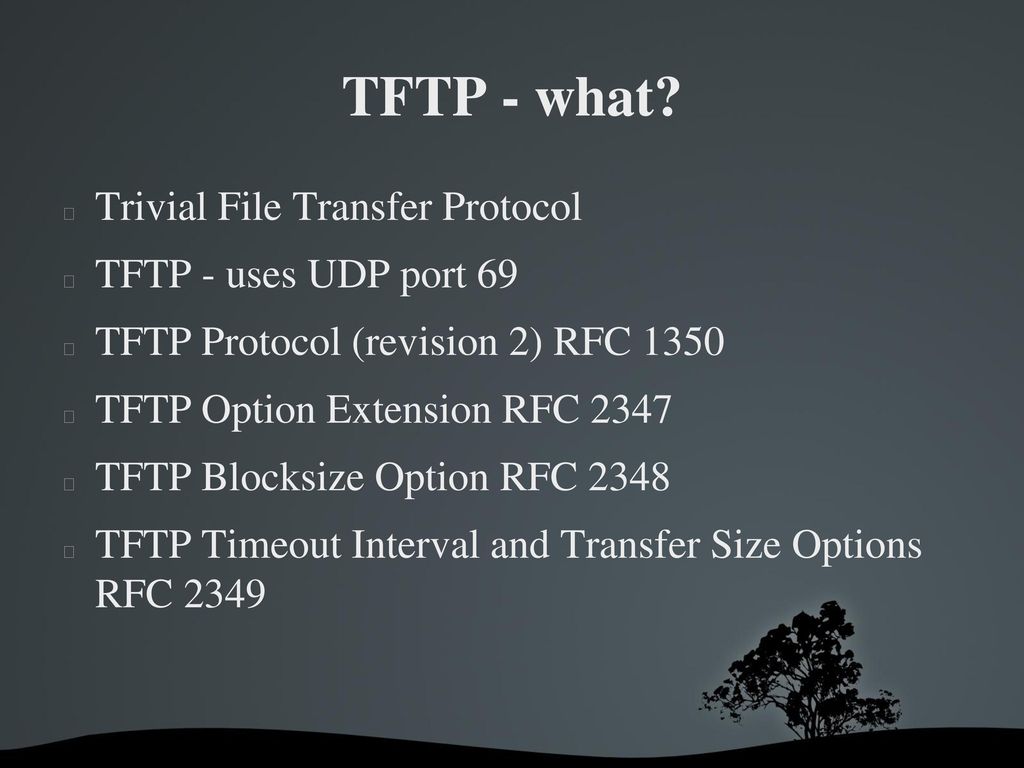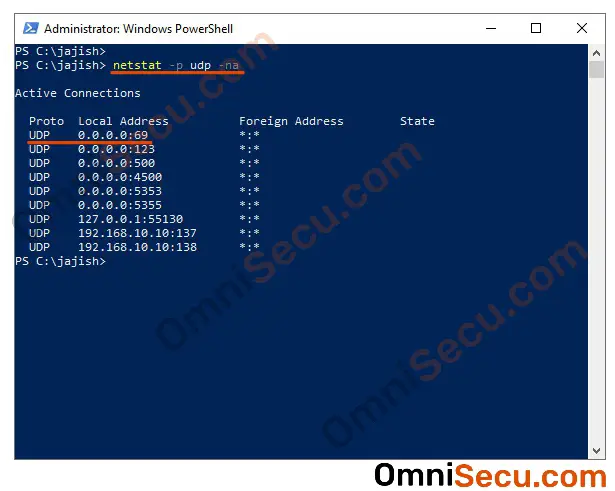

- #TFTP UDP 69 PASSWORD#
- #TFTP UDP 69 DOWNLOAD#
The server scans the requested path to the file and identifies the TFTP folder according to the path requested. The server uses the following algorithm to process incoming TFTP request: You can change port numbers using TFTP Server Manager utility. In case the option Enable firewall support is activated on the server, the server uses the same port for files transmission and listening to the TFTP incoming requests (UDP 69 port on default). For file transmission the server opens UDP ports with random numbers.  TCP 12000 - for remote management of the server. UDP 69 port - for TFTP incoming requests. Network PortsĪfter the startup WinAgents TFTP Service listens to the following ports to process the clients' requests. To control the server status, select it from the list and use the corresponding command in Action menu. According to the type of the operating system you use, it can be available in the menu Start->Administrative Tools->Services or in the Control Panel. Use the menu commands Server->Start Local TFTP Server and Server->Stop Local TFTP Server for starting up and shutting down the server.īesides, to start up and shut down WinAgents TFTP Service on your computer you can use Service Manager standard utility. You can start up and shut down WinAgents TFTP Server with WinAgents TFTP Server Manager. WinAgents TFTP Service Startup and Shutdown WinAgents TFTP Service characteristics let use it to build the most exigent productivity decisions, such as configuration management in broadband networks. WinAgents TFTP Service is specially designed to maximum efficiency of processing a large number of TFTP requests. However, keep in mind that the TFTP server will not provide you with security during your file transfer, and that's why it's crucial to only transfer files within your local area network.WinAgents TFTP Service is the main component of the program, processing clients' requests for files transmission via TFTP protocol. For example, if you want to send firmware images to your firewall, you can use TFTP as it's within your local area network. To ensure that your files are protected and sent correctly when using TFTP, you should only send files within your local area network. The process is equivalent to stop & wait, meaning that the TFTP server waits until it receives an acknowledgement from the TFTP client before sending another chunk of data. If the data you've requested contains many files, the TFTP client will send an acknowledgement to the TFTP server every time a chuck of the data has been received throughout the process. Once the TFTP server has received the command, it’ll send the data required to the TFTP client. The TFTP client will send the command to the TFTP server through UDP.
TCP 12000 - for remote management of the server. UDP 69 port - for TFTP incoming requests. Network PortsĪfter the startup WinAgents TFTP Service listens to the following ports to process the clients' requests. To control the server status, select it from the list and use the corresponding command in Action menu. According to the type of the operating system you use, it can be available in the menu Start->Administrative Tools->Services or in the Control Panel. Use the menu commands Server->Start Local TFTP Server and Server->Stop Local TFTP Server for starting up and shutting down the server.īesides, to start up and shut down WinAgents TFTP Service on your computer you can use Service Manager standard utility. You can start up and shut down WinAgents TFTP Server with WinAgents TFTP Server Manager. WinAgents TFTP Service Startup and Shutdown WinAgents TFTP Service characteristics let use it to build the most exigent productivity decisions, such as configuration management in broadband networks. WinAgents TFTP Service is specially designed to maximum efficiency of processing a large number of TFTP requests. However, keep in mind that the TFTP server will not provide you with security during your file transfer, and that's why it's crucial to only transfer files within your local area network.WinAgents TFTP Service is the main component of the program, processing clients' requests for files transmission via TFTP protocol. For example, if you want to send firmware images to your firewall, you can use TFTP as it's within your local area network. To ensure that your files are protected and sent correctly when using TFTP, you should only send files within your local area network. The process is equivalent to stop & wait, meaning that the TFTP server waits until it receives an acknowledgement from the TFTP client before sending another chunk of data. If the data you've requested contains many files, the TFTP client will send an acknowledgement to the TFTP server every time a chuck of the data has been received throughout the process. Once the TFTP server has received the command, it’ll send the data required to the TFTP client. The TFTP client will send the command to the TFTP server through UDP. #TFTP UDP 69 DOWNLOAD#
Meaning, whenever a TFTP client requests to download a file, the TFTP server will create and start a process. So how does TFTP work then? A TFTP server is always on call at port 69 for any incoming requests from the TFP client. This is due to the fact that the TFTP server needs to divide data into pieces when transferring it to the TFTP client. Unlike FTP, TFTP is slower in its transferring process. As a user, you only need to know the file's name you're trying to download, and you can send a command to request that specific file. TFTP does not need to authenticate a user. Hence, if you want to access an FTP server, you should verify yourself with a username and password.
#TFTP UDP 69 PASSWORD#
So if you send a file using UDP, your computer will not care if the information is received or not on the other end.įTP uses ports 21 and 20, whereas TFTP uses port 69.įurthermore, FTP requires a password to authenticate the user. Hence, unlike TCP, it does not verify a connection between the two computers to guarantee that data is delivered correctly. UDP, on the other hand, is connectionless. TCP verifies the connection between the two computers before any communication can take place between the computers.

TCP guarantees that you receive all your data correctly. For example, if you're downloading a file, you want the entire file and not just parts of the file. Whenever a file is transferred to your computer from another computer, your data needs to be received correctly. The communication between computers needs to be secure and reliable. Since TFTP uses UDP instead of TCP, it's an unreliable transfer protocol. TFTP relies on UDP (User Datagram Protocol) as it is a connectionless protocol. FTP relies on TCP (Transmission Control Protocol) during transport.

The difference between TFTP and FTP lies in the mechanism. What is the difference between TFTP and FTP?








 0 kommentar(er)
0 kommentar(er)
